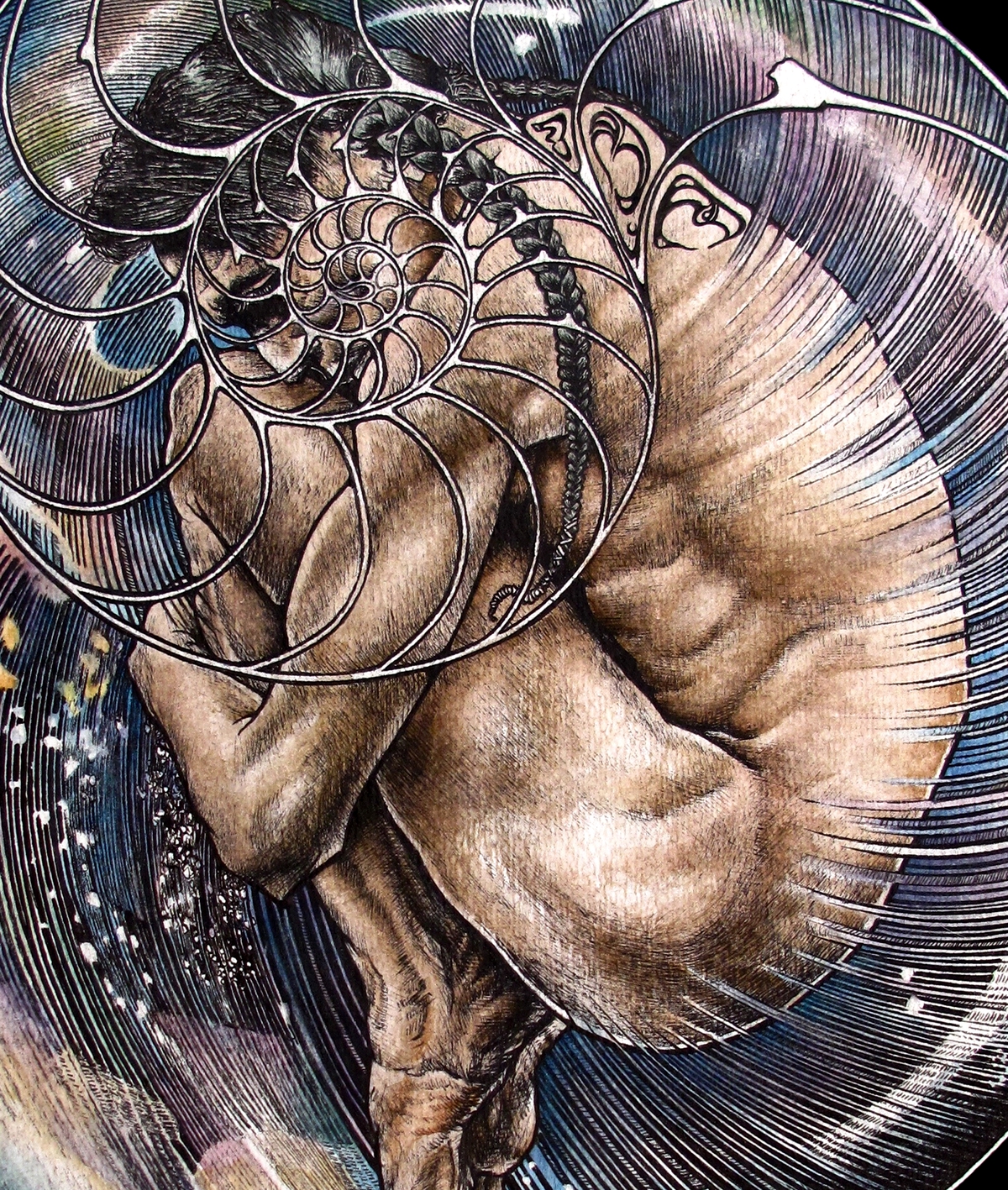


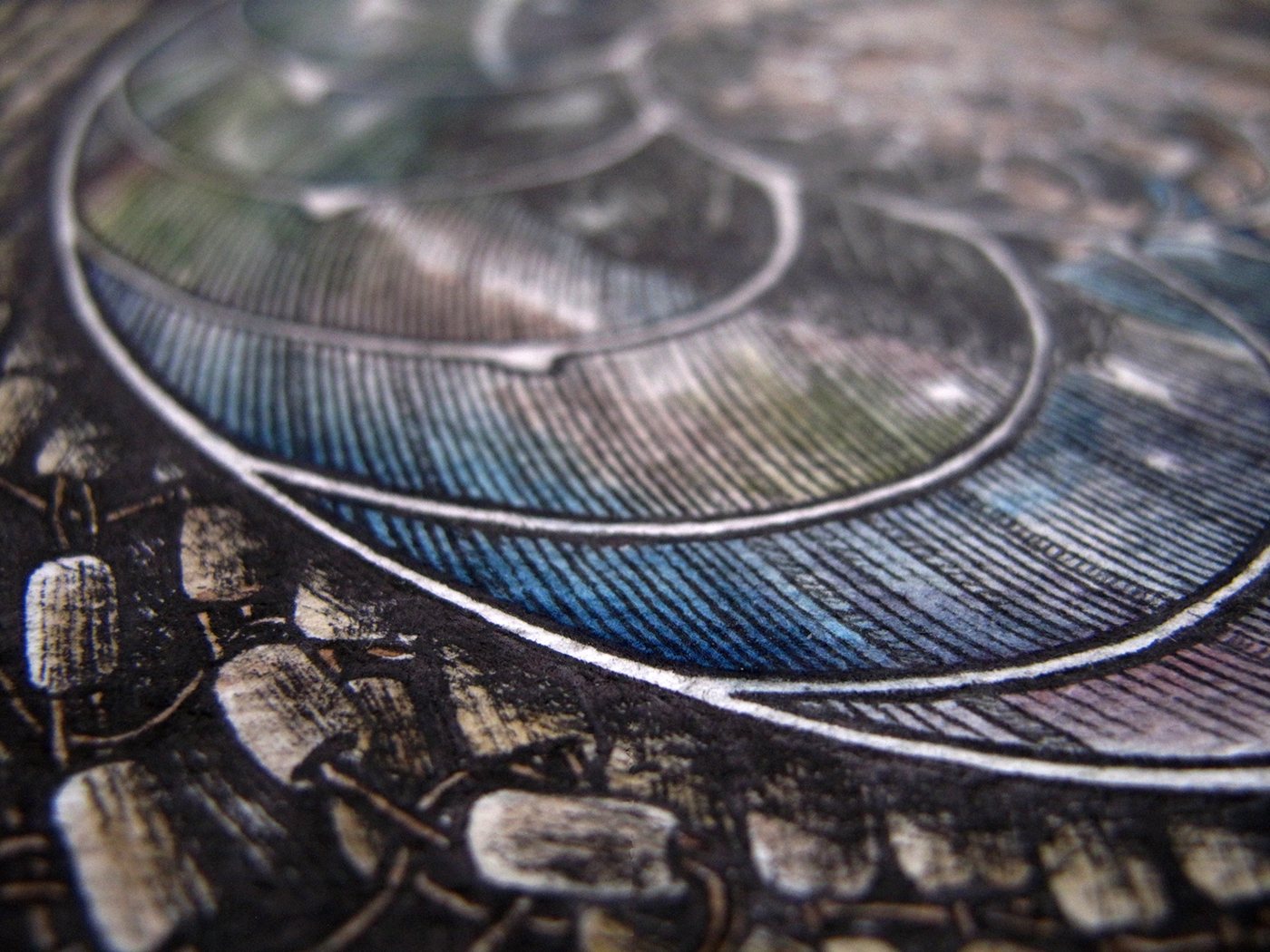

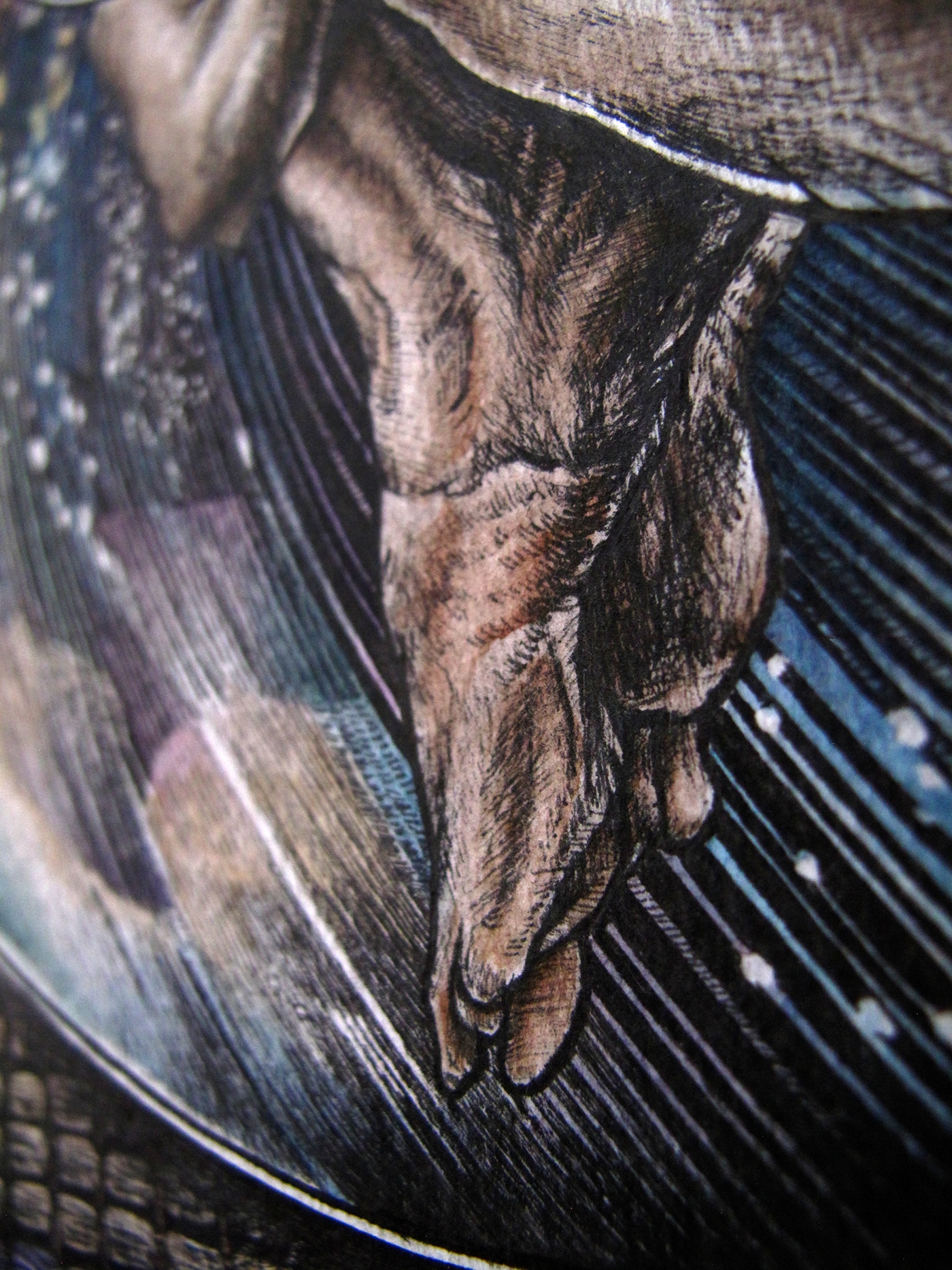
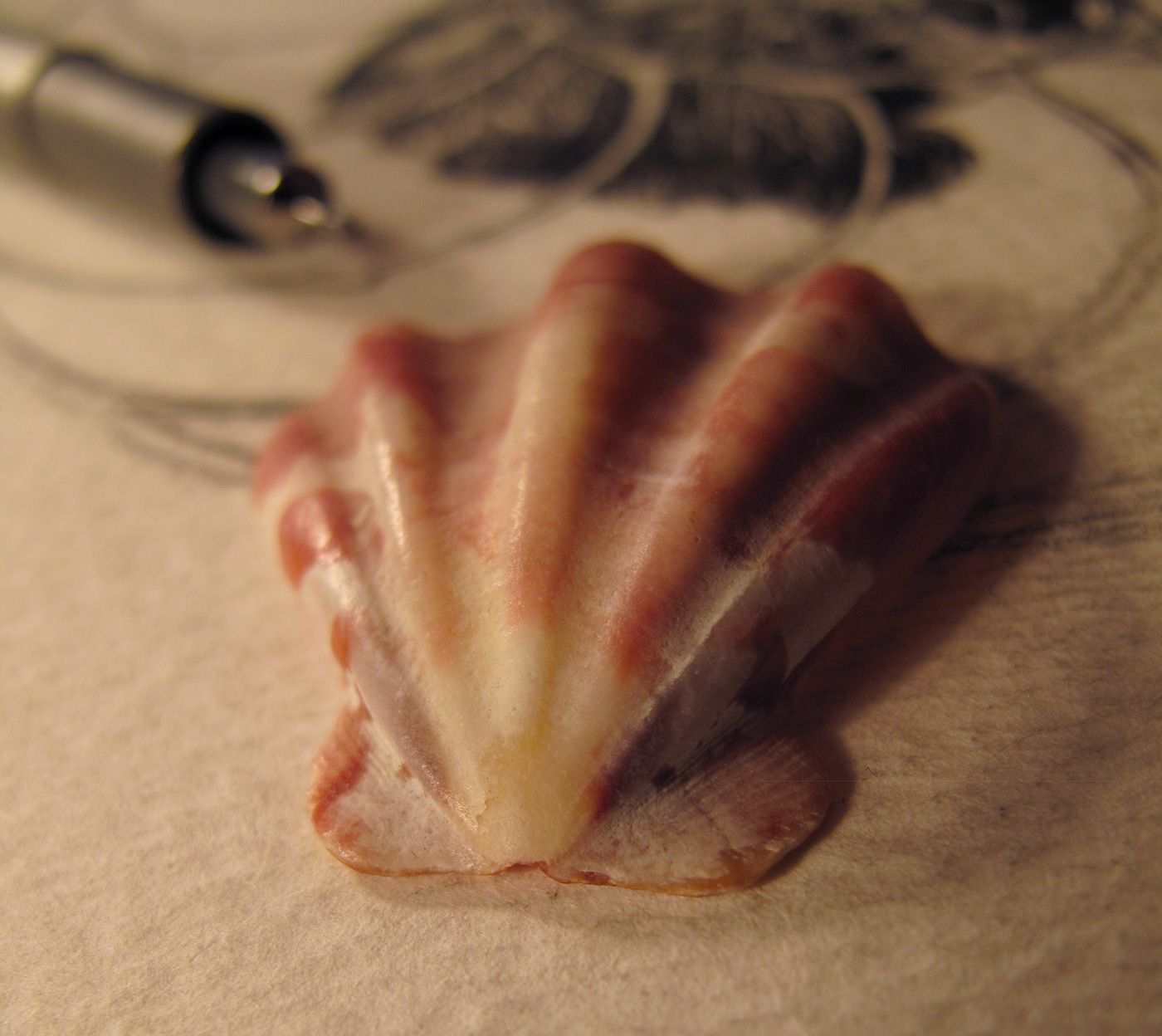
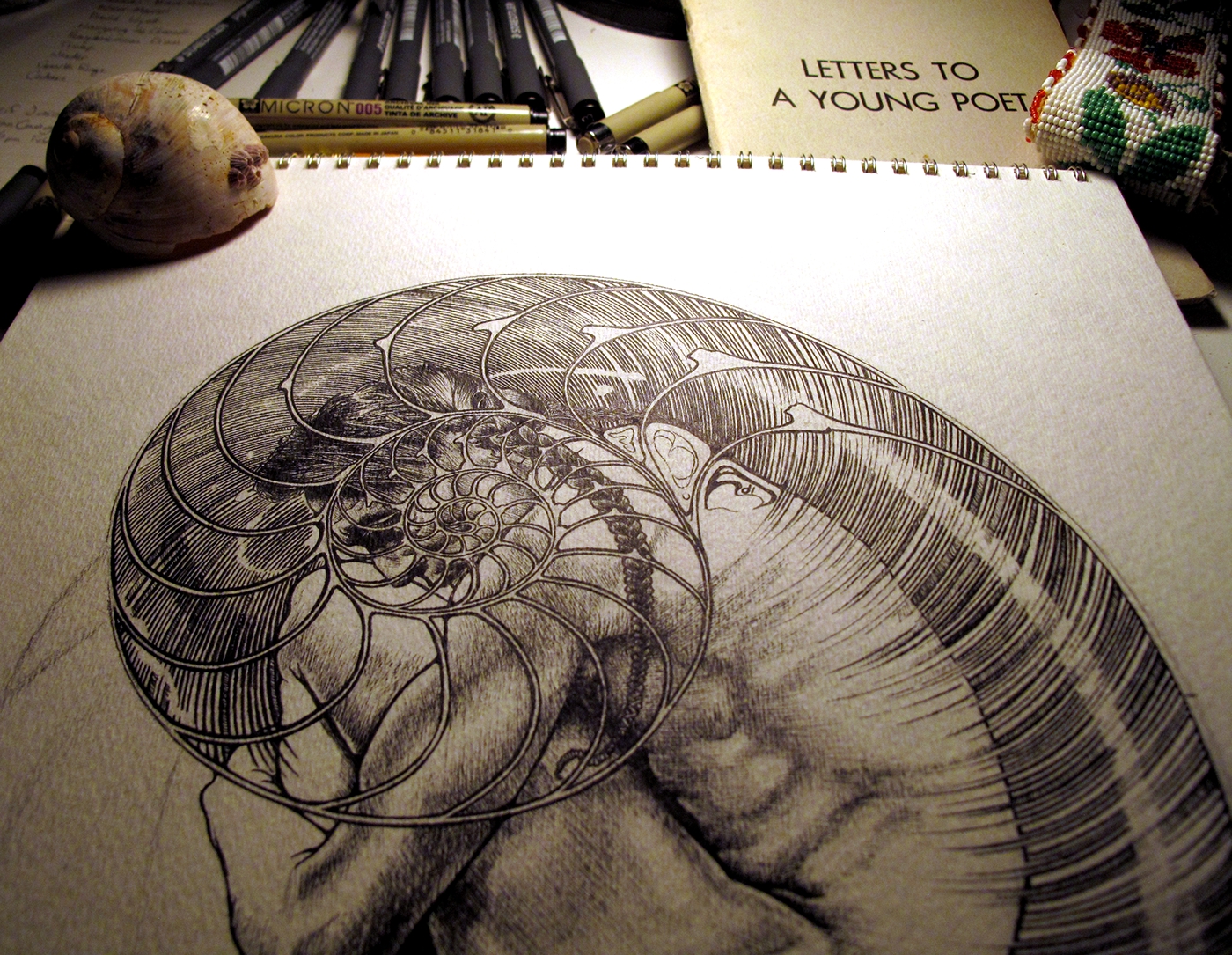




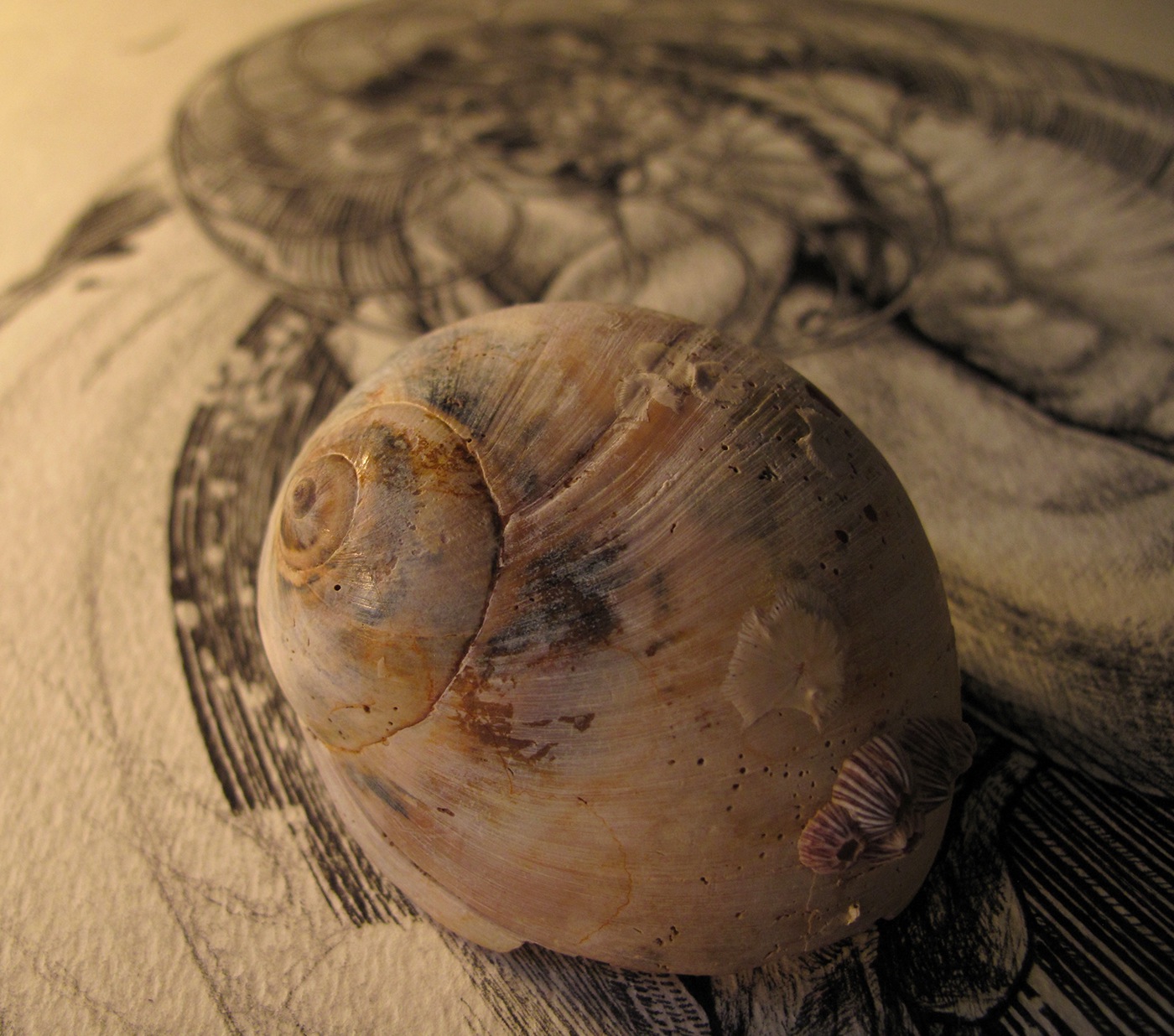

Scattered Wampum
Shards of pre-colonial history remain scattered throughout Canada’s forests, shores and plains in the form of hand shaped stones, bones and beads. Scattered wampum is a metaphoric illustration of colonialism’s catastrophic impact on our nation’s indigenous people; today, a displaced, exploited, disadvantaged and scattered people. At one time the highly esteemed wampum belt was an emblem of ‘a message that carried the burden.’ “[It was] used to signify the importance or the authority of the message associated with it. As such, treaties and other such agreements would have a large amount of wampum that had been loomed into a "belt" for them.”➀ The weight of the burden was, “by association, made to record history, laws, treaties, and speeches—a fact, a law, a stipulation, or a declaration being "talked into" a particular part or pattern of the design with which it was ever afterwards associated, thus giving additional permanency to tradition and bringing it one step further forward in the direction of written records.”➁
Each wampum belt archived history in a manner that still weighed heavily on oral traditions. However, it was only preserved as long as the interpreter was well versed in the symbolism which each belt illustrated. Therefore, the respected role of the hereditary ‘keeper of the wampum’ was crucial in keeping the living history alive. As interpreters, orators, messengers, historians, and librarians they were entrusted with a large collection of wampum belts. "When the orator spoke the law, he was reading the meaning of history and tradition contained in the tribal wampum. He held the ancient and sacred wampum belts in his hand."➂
“Every Chief and Clan Mother in the Haudenosaunee Confederacy has a string or strings of wampum that serves as a certificate of their office. These, along with the authority of the position are passed on to to their successors. Runners carrying messages would also carry wampum to signify the truth and importance of the message that they carried.”➀
“Every Chief and Clan Mother in the Haudenosaunee Confederacy has a string or strings of wampum that serves as a certificate of their office. These, along with the authority of the position are passed on to to their successors. Runners carrying messages would also carry wampum to signify the truth and importance of the message that they carried.”➀
The wampum belt’s venerable functions served a multitude of spiritual, political, mnemonic and traditional purposes which, upon European arrival, were swiftly appropriated and devalued by the colonial demand for currency. “In the ninety years between the adoption of the first written law in l808 and the abolition of tribal courts in 1898 wampum was supplanted by more than a million pages of legal transcripts and printed material. By 1896 the Redbird Smith-Keetoowah movement of the Cherokees acknowledged that understanding of the wampum had been lost, and recovery of these ancient laws became one of the cornerstones of [traditionalist] revival"➂ Ken Maracle, a Cayuga wampum craftsman, states that “[the] 'Wampum language' has been lost in the haze of the last five centuries. The power of the word, spoken or symbolized, resonates through the past to remind us of just how much we have forgotten.”➃
Victim to theft, private collectors and museum ownership, most beaded belts were broadly scattered across the continent and their neglected place of origin nearly forgotten. Thus many diplomatic, spiritual, and traditional interpretations were lost in the genocidal occupation of North America. Beads were scattered and in the same manner the First Nations reservations were established, scattering and isolating a nomadic people to restricted areas often foreign to their natural environment. The trail of tears is yet another story!
Illustrated by the mollusk shell’s skeleton which alludes to the golden spiral, much like the Maori’s Koru, it sets in motion the perpetual spinning of life’s cycles of birth, death and rebirth; the universal language from cosmos to atom. History also spins it’s repetitive cycles of conquest and colonization and hushed repercussions. And like so many other victims caught up within the revolving machine of imperialism, encased within this web, a Lakota brave curls back into the fetal position with determination not to comply, as so many chiefs chose not to sign the treaties. They knew it was not an agreement worth wasting tobacco on. No beads were woven, just a quill scrawled parchment upon which the history books were stacked.
Loud echoes from the past reverberate with the earth’s indigenous heartbeat that reiterates a cry for freedom. And as Creation’s Golden Spiral uncoils, it continues to gather the weight of ancient and current injustices towards indigenous people throughout the globe and threatens to collapse and expose the hypocrisy and false idea of a developed nation that still exploits, discriminates, pollutes and segregates beyond measure in a modern world.
The fragility of a socially cohesive framework carries the weight of the story precariously, like a dew laden spiderweb; or like an eloquently woven belt of hand crafted shell beads, symbolically and purposely placed in order to convey a significant and important message, declaration, pledge or agreement.
As the gap between colonial Euro-Canadian settlers and the marginalized owners of this country continues to grow, broken treaties remain unmended to this day. From the beginning, injustice pervaded the colonial practices and political agenda of this continent. It is easy to recognize the same pattern within every colonized indigenous group on this planet. They have been and are still being displaced, imprisoned, and dehumanized in the process. The intentions of this piece are to illustrate the forgotten, untaught story of the wampum which is the message that carries the burden. And there still remains an immeasurable burden to be carried.
Referring to the Three Figure Welcoming Belt from 1700, Canada’s late keeper of the wampum, William Commanda, stated “the wampum belt was about respecting everything that the Creator made — the animals, fish, the water, the trees. Everything that grows. That was what they [the originators of the wampum belt] were talking about. If you don't respect all this you have to pay some day."
“The sharing belt, as he sometimes called it, told the story of the first contact and it ‘promised that they would respect nature and take care of everything, not abuse anything...’ The promise was ‘to try to respect and keep harmony with nature as we had lived before. And [the French and English] both agreed that they would do that.’”➄
“As long as the sun shall give light. As long as the grass grows and as long as the rivers flow and as long as the earth is in motion, that’s how long these words will last. And that’s on every belt that we make. That’s the last words that we talk about. That’s how long these words will last.”➃
For further information on this topic, here is a great lecture by Alan Ojiig Corbiere on The Underlying Importance of Wampum Belts: https://www.youtube.com/watch?v=wb-RftTCQ_8
1. "Ganondagan Learning Wampum." Ganondagan Learning Wampum. N.p. n.d. Web. 26 Apr. 2016.
2. Holmes, William. “Art In Shell Of The Ancient Americans.” Free ebooks by Project Gutenberg. Smithsonian Institution—Bureau Of Ethnology. 20 Apr. 2013.SEC1.1
3.Strickland, R. (l975). Fire and the spirits: Cherokee law from clan to court. Norman: University of Oklahoma Press. http://kairos.technorhetoric.net/3.1/features/smith/episodes/1789/comments/Cher/wampum.html
4.Hagan, Tyler. “8th Fire Dispatches - This is How Long These Words.” CBCnews. 2015. 8th Fire Dispatches. n.d. Web.
4.Hagan, Tyler. “8th Fire Dispatches - This is How Long These Words.” CBCnews. 2015. 8th Fire Dispatches. n.d. Web.
5. Clibbon, Jennifer. “Keeper of the wampum: William Commanda, Algonquin elder.” CBCnews. Aug. 03, 2011. Web.
